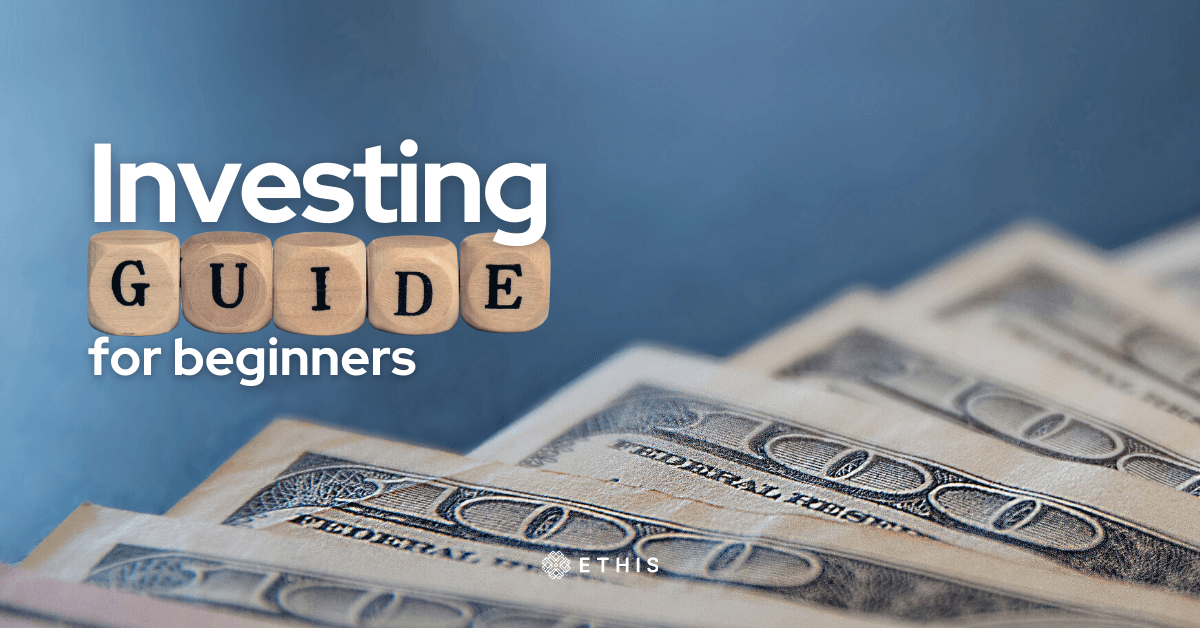Beginner Investment Strategies to Grow Your Wealth Confidently Embarking on the investment journey can feel like stepping into a labyrinth. Yet, with the right mindset and clear direction, it transforms into a rewarding odyssey. Confidence is cultivated through knowledge, discipline, and a sprinkle of adventurous spirit. This guide unveils beginner investment strategies that will empower you to navigate markets with poise and purpose.

Understanding the Fundamentals
Investing is more than just buying assets; it’s a pledge to your future self. At its essence, it involves allocating resources today in expectation of a greater return tomorrow. Complex? Sometimes. But with lucid concepts and methodical execution, the process becomes intuitive.
What Is Investing?
Investing refers to committing capital—money, time, or effort—into assets or ventures with potential for growth. Historically, assets like stocks, bonds, and real estate have been staples. Yet, novel instruments such as peer-to-peer lending and exchange-traded funds have broadened the horizon, allowing neophytes to partake with minimal capital and risk.
The Magic of Compounding
Albert Einstein allegedly called compounding the “eighth wonder of the world.” In reality, it’s a mathematical phenomenon wherein investment returns generate their own returns. Even modest gains, reinvested consistently, burgeon exponentially over decades. Start early. Stay invested. Watch compounding work its alchemy.
Establishing a Solid Foundation
Clarify Your Goals
Without targets, even the savviest navigator drifts. Define objectives: purchasing a home, retirement, funding education, or amassing passive income. Assign time horizons and monetary benchmarks. This illuminates which beginner investment strategies best align with your aspirations.
Assess Risk Tolerance
Risk appetite varies. Some revel in volatility; others shun it. Gauge your comfort level honestly. Ask: How would I sleep if the market dips 20%? If restless nights ensue, lean towards conservative allocations—bonds, dividend-paying equities, or stable value funds. Embrace volatility only if your psyche can withstand temporary setbacks.
Build an Emergency Cushion
Before deploying capital, secure a cash reserve covering 3–6 months of expenses. This financial bulwark prevents forced asset liquidation during downturns, preserving long-term compounding benefits. Perchance an unforeseen expense arises, your investments remain undisturbed.
Diversification: The Cardinal Rule
“Don’t put all your eggs in one basket,” exhorts Warren Buffett’s famous aphorism. Diversification mitigates idiosyncratic risk by spreading capital across various asset classes, industries, and geographic regions.
Asset Class Allocation
- Equities: Offer higher growth potential but exhibit volatility.
- Bonds: Provide steady income and lower volatility.
- Real Estate: Yields rental income and capital appreciation, albeit with illiquidity considerations.
- Cash & Cash Equivalents: Lower returns but unparalleled liquidity and safety.
A balanced mix—customized to your risk tolerance and time horizon—ensures smoother portfolio oscillations.
Sector and Geographic Spread
Even within equities, avoid concentration in a single sector. Combine technology, healthcare, consumer staples, and financials. Further, diversify internationally to capture growth in emerging markets while buffering against domestic downturns.
Embrace Low-Cost Index Funds
For many novices, actively managed funds promise outperformance. Reality, however, reveals that most active managers fail to surpass market indices, especially after fees. Index funds and ETFs (exchange-traded funds) track broad benchmarks like the S&P 500 or MSCI World. Their low expense ratios and broad diversification render them ideal for beginner investment strategies.
Benefits of Index Investing
- Cost Efficiency: Minimal management fees.
- Transparency: Holdings mirror the underlying index.
- Simplicity: One purchase, myriad companies.
- Tax Efficiency: Reduced trading frequency lowers capital gains distributions.
Dollar-Cost Averaging: Discipline Over Timing
Timing the market is a siren’s call—tempting yet treacherous. Dollar-cost averaging (DCA) eschews timing by investing a fixed amount at regular intervals (e.g., monthly). This approach purchases more shares when prices are low and fewer when prices are high, smoothing entry points and reducing emotional decision-making. Over the long haul, DCA fosters consistency and mitigates regret.
Harnessing the Power of Robo-Advisors
Technology has democratized access to sophisticated portfolio management. Robo-advisors employ algorithms to construct and rebalance portfolios based on your risk profile. For beginners, this is akin to having a virtual financial advisor without exorbitant fees.
How Robo-Advisors Work
- Questionnaire: Assesses goals, risk tolerance, and time horizon.
- Portfolio Construction: Utilizes ETFs spanning equities, bonds, and alternative assets.
- Automated Rebalancing: Maintains target allocations as markets shift.
- Tax-Loss Harvesting: Offsets gains with losses, where applicable.
Robo-advisors relieve novices from tactical minutiae, letting them focus on strategy rather than day-to-day fluctuations.
Dividend Investing: Cultivating Passive Income
Dividends—periodic profit distributions by companies—embody the ethos of passive income. By purchasing shares of dividend-paying firms, investors enjoy a stream of cash flow, which can be reinvested to compound returns or withdrawn for supplementation.
Characteristics of Robust Dividend Stocks
- Consistent Payout History: Companies with long track records (e.g., 25+ years of hikes).
- Healthy Payout Ratios: Dividends that don’t strain earnings (ideally below 60%).
- Strong Cash Flow: Ensures sustained distributions during market troughs.
Dividend aristocrats, utility firms, and consumer staples often feature in such portfolios.
Bond Basics for Beginners
Bonds, essentially IOUs, furnish predictable interest payments and return of principal at maturity. They possess an inverse relationship with interest rates: when rates rise, bond prices fall, and vice versa.
Types of Bonds
- Government Bonds: Virtually risk-free, backed by sovereign credit.
- Municipal Bonds: Tax-advantaged, ideal for high earners.
- Corporate Bonds: Higher yields but credit risk varies by issuer rating.
A bond’s duration indicates sensitivity to rate changes. Conservative investors might favor short-duration bonds to temper volatility.
Real Estate Exposure Without the Hassle
Direct property ownership demands significant capital, managerial effort, and poses illiquidity. Real Estate Investment Trusts (REITs) offer a solution. Publicly traded REITs allow you to own slices of commercial properties, residential complexes, or specialized assets like data centers. They distribute at least 90% of taxable income as dividends, making them fertile ground for passive income seekers.
Alternative Investments: Beyond Stocks and Bonds
While stocks and bonds dominate traditional portfolios, niche assets—commodities, peer-to-peer lending, cryptocurrencies, and collectibles—can augment diversification. However, exercise prudence: these often exhibit elevated volatility and complexity. For novices, allocate only a modest tranche to alternatives, ensuring core holdings remain in broad-based funds and fixed income.
Education and Self-Improvement
Investing in one’s financial education yields compounding intellectual returns. Cultivate literacy by:
- Reading seminal works (e.g., The Intelligent Investor).
- Following reputable financial blogs and podcasts.
- Attending webinars and local investment clubs.
Stay abreast of macroeconomic trends, central bank policies, and corporate earnings. An inquisitive mind distinguishes successful investors from passive participants.
Cultivating the Right Mindset
Patience and Perseverance
Markets oscillate. Short-term turbulence is inevitable. Embrace a long-term perspective. Resist the urge to churn your portfolio with every headline. Remember: wealth accumulation is a marathon, not a sprint.
Emotional Discipline
Fear and greed are potent adversaries. Before reacting to market gyrations, consult your predetermined strategy. If you’ve crafted a robust plan, fleeting turbulence shouldn’t derail it.
Continuous Reassessment
Life circumstances evolve—goals shift, incomes change, risk appetites fluctuate. Regularly revisit your financial plan, at least annually, to realign investments with your current reality.
Tax Optimization Techniques
Taxes can erode returns. Employ strategies such as:
- Tax-Advantaged Accounts: IRAs, 401(k)s, or local retirement vehicles.
- Tax-Loss Harvesting: Selling underperforming assets to offset gains.
- Asset Location: Placing tax-inefficient holdings (dividend stocks) in sheltered accounts, while keeping tax-efficient assets (index funds) in taxable accounts.
Consult a tax professional to tailor these approaches to your jurisdiction.
Automating Your Wealth-Building Journey
Automation is the linchpin of successful beginner investment strategies. Set up:
- Automatic Contributions: Direct a portion of each paycheck into investment accounts.
- Scheduled Rebalancing: Use online broker tools or robo-advisors to maintain target allocations.
- Bill Pay and Emergency Fund Rebuild: Automate transfers to savings to replenish reserves after withdrawals.
By removing manual interventions, you eliminate procrastination and emotional biases.
Pitfalls to Avoid
Chasing Hot Tips
Yesterday’s sensation can become tomorrow’s flop. Avoid succumbing to hearsay or “insider” whispers. Conduct independent research and validate information through reliable sources.
Excessive Trading
High-frequency trading may seem exhilarating but often incurs hefty commissions and taxes, eroding net returns. For beginner investment strategies, a buy-and-hold philosophy is typically superior.
Overleveraging
Borrowing to invest amplifies returns—and losses. Margin accounts can precipitate rapid liquidation during downturns, potentially triggering devastating losses. If your risk tolerance permits, consider conservative debt levels and always maintain adequate collateral.
Growing Beyond the Basics
Once foundational strategies are mastered, advanced techniques beckon:
- Options Strategies: Covered calls for income, protective puts for downside hedging.
- Alternative Asset Classes: Venture capital, private equity, or art investments.
- Direct Stock Analysis: Employ fundamental and technical analysis to identify undervalued equities.
However, tread carefully. Advanced strategies often entail sophisticated risk management and deeper market understanding.
Monitoring and Measuring Success
Key performance indicators (KPIs) guide progress:
- Annualized Return: Compares your portfolio’s growth against benchmarks.
- Sharpe Ratio: Assesses risk-adjusted returns.
- Expense Ratio Impact: Tracks how fees diminish returns over time.
Maintain a periodic performance review—quarterly or semiannually—and recalibrate as needed.
Cultivating a Community
Joining investment forums, mastermind groups, or local meetups fosters camaraderie and shared learning. Engaging with peers can spark insights, introduce fresh perspectives, and sustain motivation during challenging market phases.
Conclusion
Wealth-building is an art and a science. By embracing time-tested beginner investment strategies, you’ll cultivate both confidence and competence. Forge a robust foundation with diversified, low-cost vehicles. Automate diligently. Educate ceaselessly. And above all, remain patient and disciplined. Your future self will thank you.
Now, begin that journey. Invest wisely, stay curious, and watch your wealth flourish with unwavering confidence.




